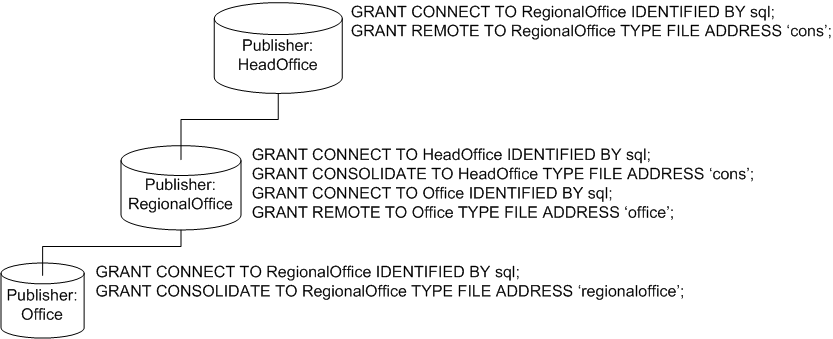In a multi-tier hierarchy, all remote databases immediately below the current database are granted REMOTE permission. The database immediately above the current database in the hierarchy is granted CONSOLIDATE permission.
For example, there is a consolidated database identified by its publisher, HeadOffice, which has a remote database, RegionalOffice. However, the RegionalOffice database also has a remote database: Office.
On the consolidated database, HeadOffice, you:
Create a user with the same name as the publisher of the remote database RegionalOffice.
Grant REMOTE permission to the user RegionalOffice. This identifies RegionalOffice as a database that receives messages from HeadOffice.
On the RegionalOffice database, you:
Create a user with the same name as the publisher of the consolidated database HeadOffice.
Grant CONSOLIDATE permission to HeadOffice. This identifies HeadOffice as the consolidated database for RegionalOffice; that is, HeadOffice is the database that sends messages to RegionalOffice.
Create a user with the same name as the database immediately below RegionalOffice: Office.
Grant REMOTE permission to Office. This identifies Office as a database that receives messages from RegionalOffice.
On the Office database, you:
Create a user with the same name as the publisher of the consolidated database: RegionalOffice.
Grant Consolidate permission to the RegionalOffice user. This identifies RegionalOffice as the consolidated database for Office; that is RegionalOffice sends messages to Office.

 |
Discuss this page in DocCommentXchange.
|
Copyright © 2010, iAnywhere Solutions, Inc. - SQL Anywhere 12.0.0 |